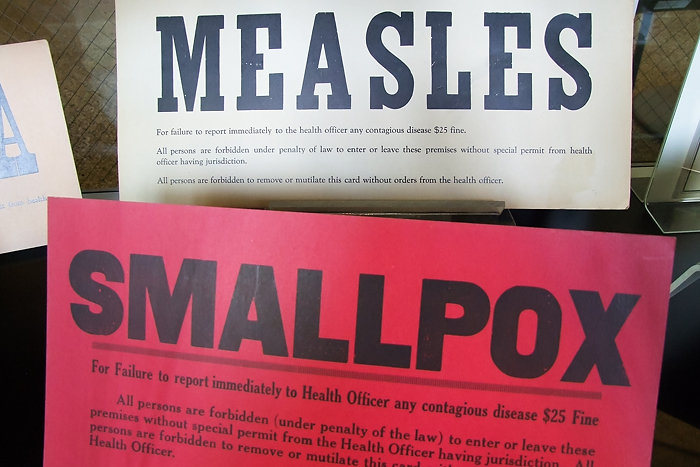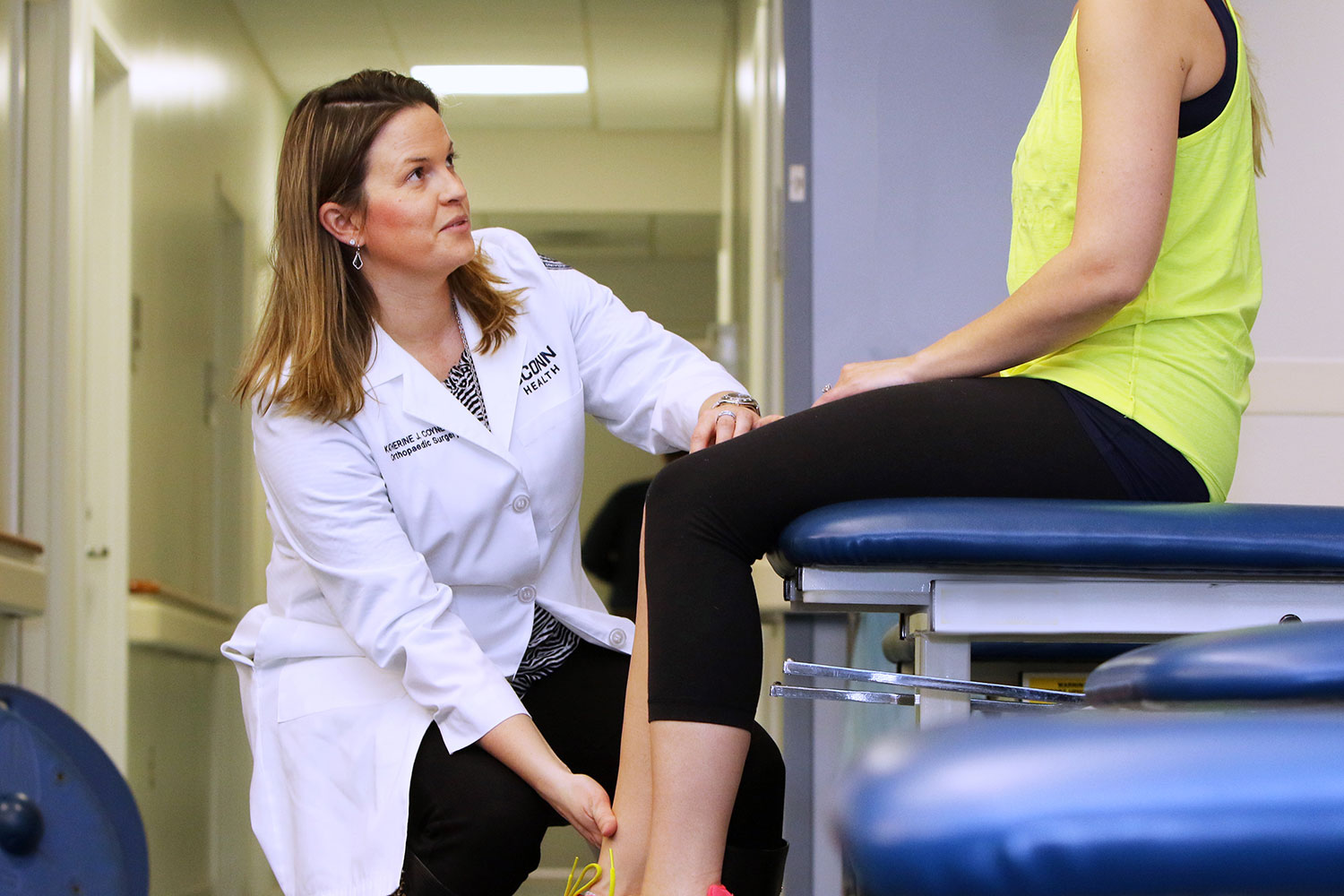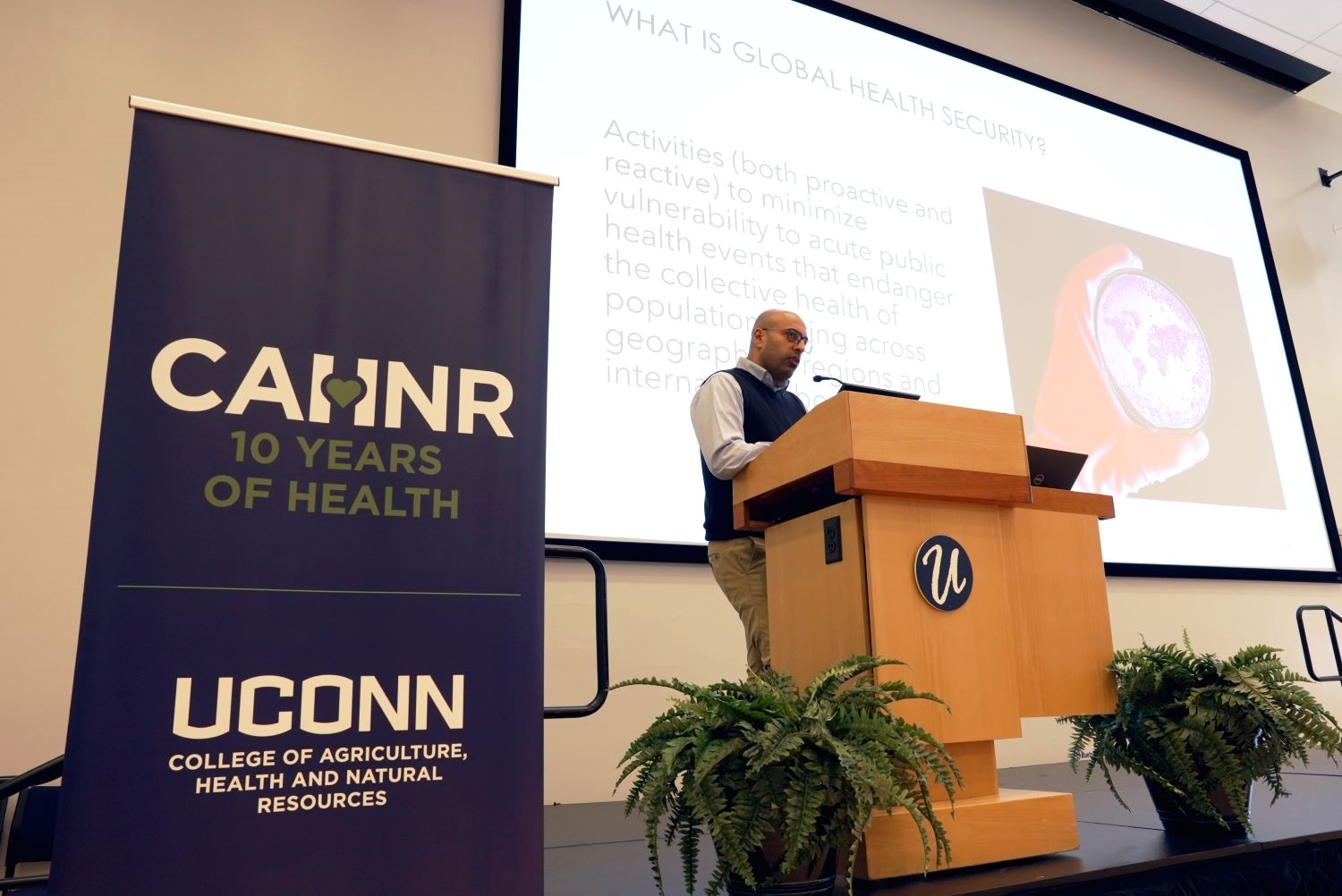Early 20th-century physicians had to contend with outbreak threats that are almost unheard of in today’s developed world, such as measles, smallpox, yellow fever and malaria.
But an exhibit now on display in the UConn Health Center’s Stowe Library reveals that some historic public health concerns are still issues today.
This week is National Public Health Week and the exhibit “Public Health: An Historical Perspective” features artifacts from the Hartford Medical Society Historical Library, which is housed at the Health Center. The case of six shelves covers five categories: occupational health, water and sanitation, communicable disease, substance abuse, and social hygiene.
The display includes a state entomologist’s report on Connecticut’s mosquito problem from 1915 which includes a map of New Haven where malarial mosquitoes breed; the pamphlet “Theory and Facts of Cigarette Smoking,” published by the Axton-Fisher Tobacco Company in 1934; and books about other types of smoking: one from 1938 titled “Marihuana: America’s New Drug Problem,” and the 1882 text “Opium-smoking in America and China.”
“We have the records of the Connecticut Society of Social Hygiene (1911-1921) in the Hartford Medical Society library,” says HMS librarian Jenny Miglus, who created the exhibit. “Dr. Thomas Hepburn, Katherine Hepburn’s father, was the secretary. The founding of Connecticut’s organization predated the American Social Hygiene Association by three years. These social hygiene societies were formed in the early 20th century to combat the spread of venereal disease; a major concern with a moral twist.”
Other artifacts include a book on fevers, published in Middletown in the early 19th century, pamphlets on occupational health, examples of 19th century plumbing fixtures and suggested water filtration systems, and early 20th-century quarantine signs.
“It’s interesting that, while many of the specific problems are different, many of the larger issues are the same,” Miglus says.
“Public Health: An Historical Perspective” will be on display in Stowe Library lobby through the fall.
Follow the UConn Health Center on Facebook, Twitter and YouTube.



